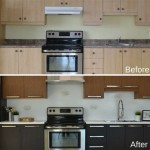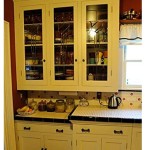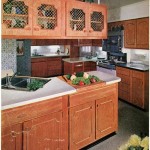How To Remove Kitchen Countertops Without Damaging Cabinets
Removing kitchen countertops without damaging the underlying cabinets requires careful planning and execution. This process involves several steps and specialized tools to ensure a successful outcome. This article provides a comprehensive guide for homeowners undertaking this task.
Initial Preparation: Before beginning the removal process, it is crucial to clear the countertop of all appliances, utensils, and decorative items. This includes disconnecting any plumbing fixtures, such as sinks and faucets, to prevent damage during the removal. Shutting off the water supply to these fixtures is a necessary precaution. Additionally, protecting the surrounding areas, such as flooring and cabinets, with drop cloths or other protective coverings is recommended.
Identifying the Countertop Material: Different countertop materials require slightly different removal techniques. Common materials include laminate, solid surface, granite, and quartz. Identifying the material will help determine the appropriate tools and methods for removal. Laminate countertops are typically glued to a particleboard substrate, while solid surface and stone countertops are often adhered with silicone or adhesive.
Gathering Necessary Tools and Safety Equipment: Several tools are essential for countertop removal. These include a pry bar, putty knife, utility knife, reciprocating saw, safety glasses, dust mask, and work gloves. For heavier countertops like granite or quartz, a helper may be needed for lifting and maneuvering.
Disconnecting Plumbing Fixtures: If the sink is integrated into the countertop, it must be disconnected before removing the countertop. This involves disconnecting the water supply lines, the drain pipe, and the garbage disposal (if applicable). A basin wrench can be helpful for loosening difficult plumbing connections. Once disconnected, the sink should be carefully lifted out of the countertop opening.
Locating and Removing Screws and Fasteners: Countertops are typically secured to the cabinets with screws or other fasteners. These fasteners are usually located along the underside of the countertop, often hidden by caulking or trim. Carefully inspect the underside of the countertop and locate all fasteners. Use a screwdriver or drill to remove these fasteners. The caulking or trim may need to be removed with a utility knife or putty knife to access the fasteners fully.
Separating the Countertop from the Cabinets: After removing the fasteners, the next step is to separate the countertop from the cabinets. This can be done by carefully inserting a putty knife or thin pry bar between the countertop and the cabinet. Gently work the pry bar along the seam, gradually separating the countertop from the adhesive. For stubborn areas, a reciprocating saw with a fine-tooth blade can be used to cut through the adhesive. Exercise caution when using power tools to avoid damaging the cabinets.
Handling and Disposing of the Old Countertop: Once the countertop is free from the cabinets, it must be carefully lowered to the floor. For heavier countertops like granite or quartz, two or more people should be involved in this process. Consider using lifting straps or a furniture dolly to assist with moving the countertop. Dispose of the old countertop according to local regulations. Some municipalities may require special disposal procedures for construction debris.
Inspecting and Repairing Cabinets: After removing the countertop, inspect the cabinets for any damage that may have occurred during the removal process. Minor damage, such as scratches or small dents, can often be repaired with wood filler or touch-up paint. If more extensive damage is present, professional cabinet repair may be necessary.
Preparing for New Countertop Installation: The final step is to prepare the cabinets for the installation of the new countertop. This may involve cleaning the cabinet tops, leveling any uneven surfaces, and applying a sealant to protect the cabinets from moisture. Follow the manufacturer’s instructions for the specific type of countertop being installed.
Seeking Professional Assistance: While removing countertops is a task some homeowners can undertake, it can be challenging. If you are uncomfortable with any part of the process, or if you are dealing with particularly heavy or complex countertops, it is recommended to seek the assistance of a qualified professional. Professional countertop installers have the experience and equipment necessary to ensure a safe and successful removal and installation.
Additional Tips: Using a heat gun to soften the adhesive can be helpful, especially for laminate countertops. Shims can be used to support the countertop during removal and prevent it from falling. Always prioritize safety and wear appropriate safety equipment throughout the process.

Easily Remove Countertops Without Damage

Kitchen Removing Base Cabinet Countertops Backsplash

How To Remove A Granite Countertop Without Damaging Anything Shorts

Can You Replace Kitchen Countertops Without Damaging Cabinets The Countertop Factory

How To Remove Laminate Countertop Backsplash Without Damaging Cabinets

Easy Steps For Removing A Kitchen Countertop

Kitchen Countertop Replacement Without Replacing Cabinets

How To Remove Granite Countertops Four Generations One Roof

How To Remove Old Countertops Without Damage The Backsplash Hunker

How To Remove Quartz Countertop Without Breaking It Granite Selection
Related Posts








